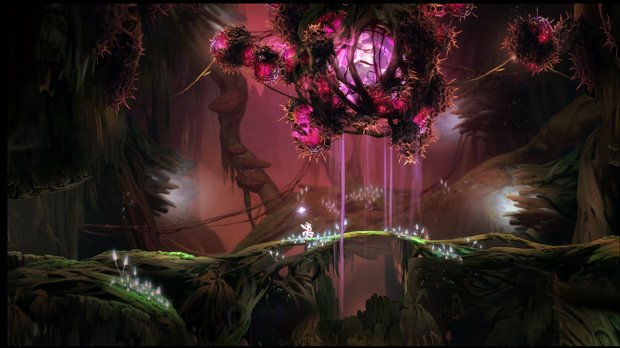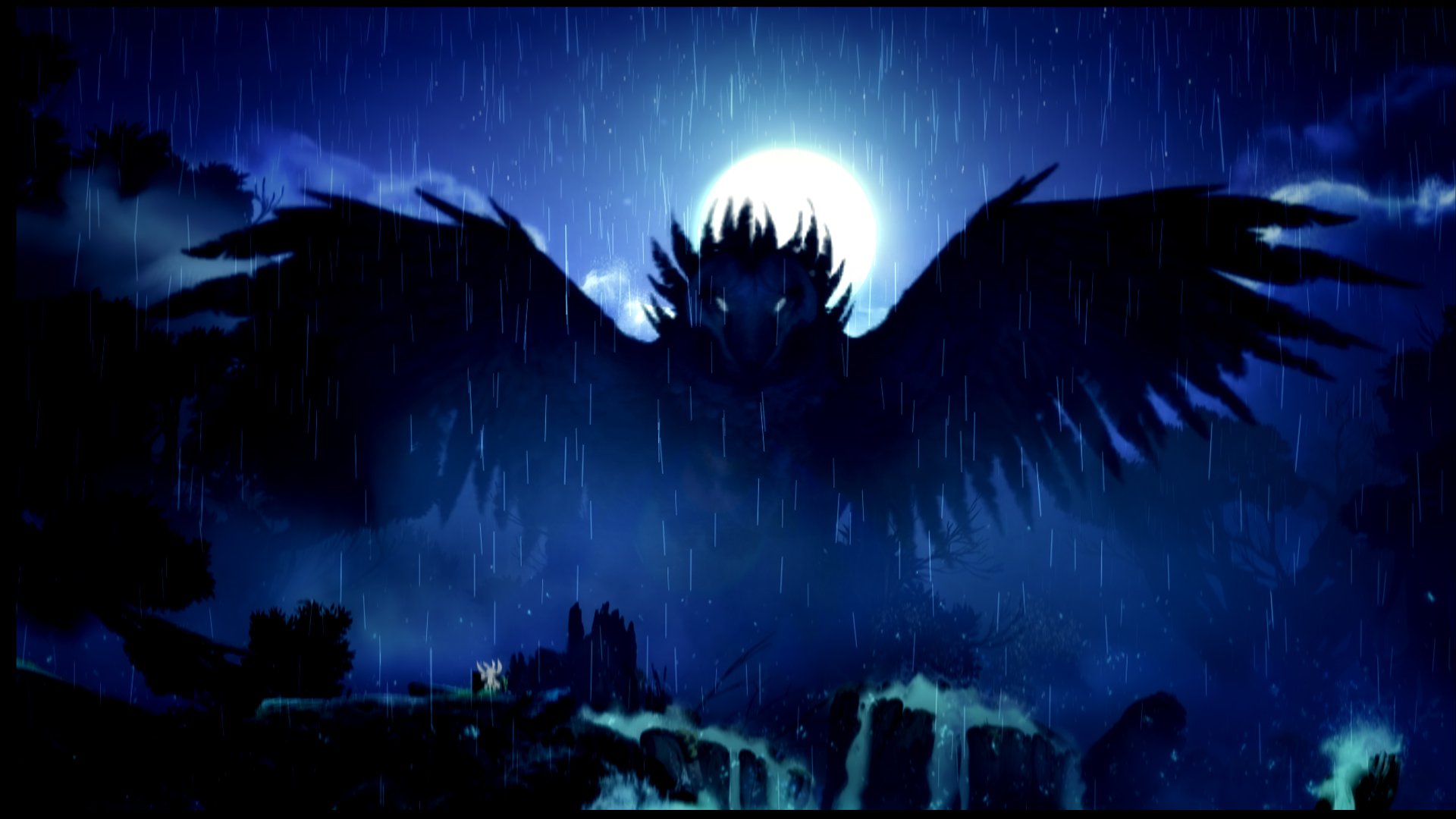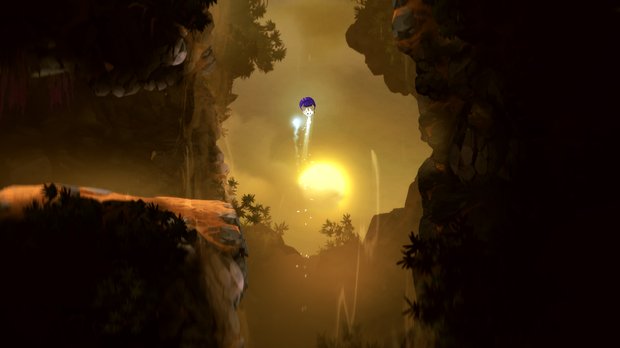GamesRadar+ Verdict
If you can steel yourself for a challenge and come to grips with an unwieldy checkpoint system, Ori and the Blind Forest will mesmerize you with its lush world and incredible artistry.
Pros
- +
Incredible art and audio make the forest and its inhabitants feel vibrantly alive
- +
Ori's movements feels agile and precise
- +
Varied stage themes keep things interesting
Cons
- -
The save-anywhere mechanic can be more punishing than convenient
- -
Some spikes in difficulty that can spoil the more climactic sections
Why you can trust GamesRadar+
There are moments in Ori and the Blind Forest when you'll want to put down the controller and just take a breath. Usually, it's because you're simply amazed by its magnificent artistry, pausing to appreciate the beauty and depth of the moonlit forest or the sweeping orchestral score. But occasionally, it'll be out of frustration, or the sense that you're repeatedly bashing into a brick wall. Ori is a demanding platformer that 2D enthusiasts will cherish dearly, though you'll need to brace yourself for some serious demands of your skills and patience.
Right from the get-go, everything about Ori's presentation is pure magic. The gorgeous hand-drawn art, exquisite animation, and powerful music make you feel like you're taking part in an animated movie, calling to mind beloved films like Princess Mononoke and The Secret of NIMH. As the adorable bunny-squirrel-thing Ori, you're tasked by a Na'vi-like spirit companion named Sein to unite the elements of Water, Wind, and Warmth, which will restore life to an ancient forest. It's a pretty straightforward motivation for a 2D Metroidvania-style platformer, but the narrative does dabble with heavy themes like sacrifice and vengeance. Also, be forewarned: the intro will make you want to weep like you did during the beginning of Pixar's Up. Hey, it's cool: I did too.

Once you've dried your eyes and started bounding around this massive woodland, you'll find that Ori controls with the kind of quick, deft precision that defines the most gratifying platformers. Running and jumping through trees and over boulders feels tight and intuitive, conveying a real sense of lightweight agility and being in tune with Ori's movements. As with any Metroidvania, you're continuously stacking new exploration-enabling abilities into your repertoire, and each stage helps you come to grips with things like wall-climbing or double-jumping in a way that's comfortable and natural.
Just when you think you've mastered Ori's movement, another element comes in to keep you on your toes. Maybe you'll need to lug around a gravity-shifting orb to line up physics-defying jumps inside a forge that's frosted over, or get the hang of mid-air gliding with a leaf to ascend through a windy mountain pass. The incredibly varied areas always introduce fresh mechanics to match their unique surroundings, each one feeling invigoratingly different from the last while still building on what you've learned thus far. And unlike many Metroidvanias, which taunt you with just-out-of-reach collectibles that you can't attain until much later, Ori usually has the means to reach helpful power-ups as he encounters them (provided you can actually spot their clever hiding places).


I won't give away too much about Ori's antagonist, but every time she shows up, you're liable to experience a rush of awe and fear. Her gigantic frame is perfectly woven into the environment, creating some incredible scenes of foreground action as you flee from the ominous, ever-nearing threat in the background. Even if you end up seeing these animations over and over again due to repeat deaths, they're still awesome.
Though there is combat to complement the sense of fluid movement, it takes a backseat to the platforming. Your exposition-spouting spirit buddy Sein will simply auto-target the closest enemy so that you can zap them with blue spirit-fire. It essentially boils down to mashing a button when danger's nearby - until you learn a mid-air dash that lets you simultaneously propel yourself through the air and reflect projectiles back at gooey, thorny baddies. It's one of Ori's more unique moves, and makes for some downright intense bits of platforming and chaining jumps, though it can just as easily send you rocketing into a one-hit-kill hazard if you get sloppy.
But Ori's most important power has nothing to do with mobility. Instead of keeping tabs on your progress with constant auto-saves, Ori makes you choose where to drop the bright glow of a checkpoint (provided it's not right next to an enemy or atop a precarious platform). This save-anywhere mechanic is crucial, and your experience will be defined by how well you can adapt to it. Deciding where and when to set up a spawn point is a discipline that most modern games don't ask of you, and the adjustment can be harsh. You probably won't learn your lesson until you're abruptly killed during some absentminded exploration, instantly losing ten minutes of progress as a result.

Even after you come to grips with Ori's checkpoint mechanic, it's still got a few flaws. If you activate your save in a particularly bad spot, away from any crystals that replenish your save-state energy, you might get caught in a loop of constant, dispiriting death while you desperately try to find sanctuary. In a bizarre move, the power to drop a checkpoint uses the same limited resource as your charged-up attack - something you probably won't realize until you're stuck in a tricky area with an empty tank of save-juice. This becomes less of a problem after you've collected more energy upgrades, but some early sections encourage cautious play when you just want to run free.
Things get even more unforgiving in three climactic auto-scrolling levels - brutal, checkpoint-free gauntlets that put all your current abilities to the test. These sudden spikes in difficulty will be more palatable to hardcore platforming fans, but could bring the average gamer's progress to a standstill. When you finally do overcome these hurdles, though, it really makes you appreciate how delightful it is guiding Ori through the rest of the open world, hunting for secrets or just appreciating the sights. I found myself chasing after full completion for the simple joy of occupying Ori's picturesque surroundings a little bit longer.

Equal parts charm and challenge, Ori and the Blind Forest makes some harsh demands but pays off with its stellar presentation. Its atmosphere is phenomenal, with the kind of universal appeal that's rarely found in games - from the way the backgrounds feel like living environments, to the uplifting music and touching cinematic moments. Completing Ori's six-to-nine-hour journey will certainly leave you feeling warm, fuzzy, and accomplished - just be ready to dig in for some particularly trying segments.
This game was reviewed on Xbox One.
More info
| Genre | Action |
| Description | Find your courage and save the forest of Nibel from an evil ruler. |
| Platform | "PC","Xbox One" |
| US censor rating | "Everyone","Everyone" |
| UK censor rating | "","" |
| Release date | 1 January 1970 (US), 1 January 1970 (UK) |
Lucas Sullivan is the former US Managing Editor of GamesRadar+. Lucas spent seven years working for GR, starting as an Associate Editor in 2012 before climbing the ranks. He left us in 2019 to pursue a career path on the other side of the fence, joining 2K Games as a Global Content Manager. Lucas doesn't get to write about games like Borderlands and Mafia anymore, but he does get to help make and market them.




